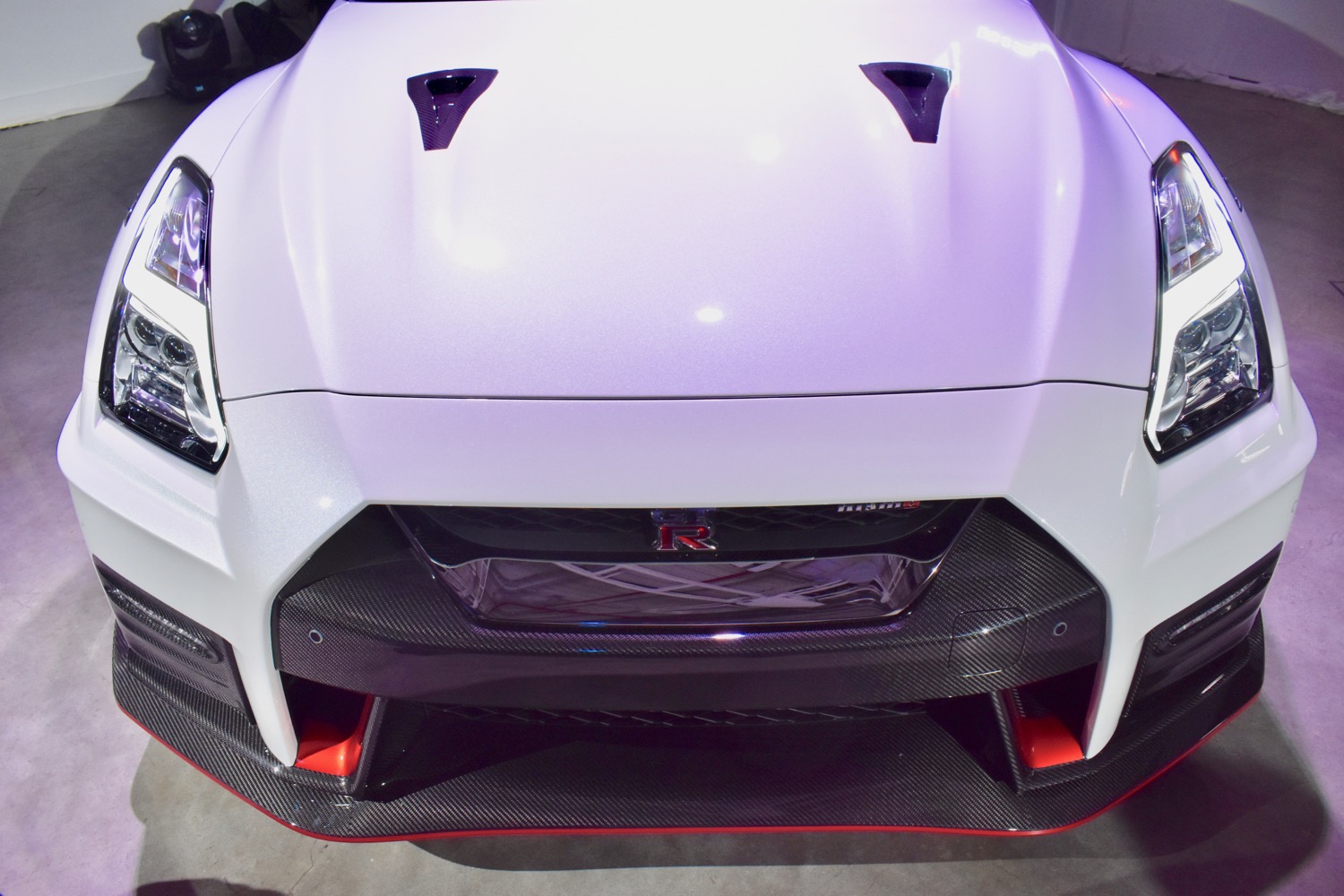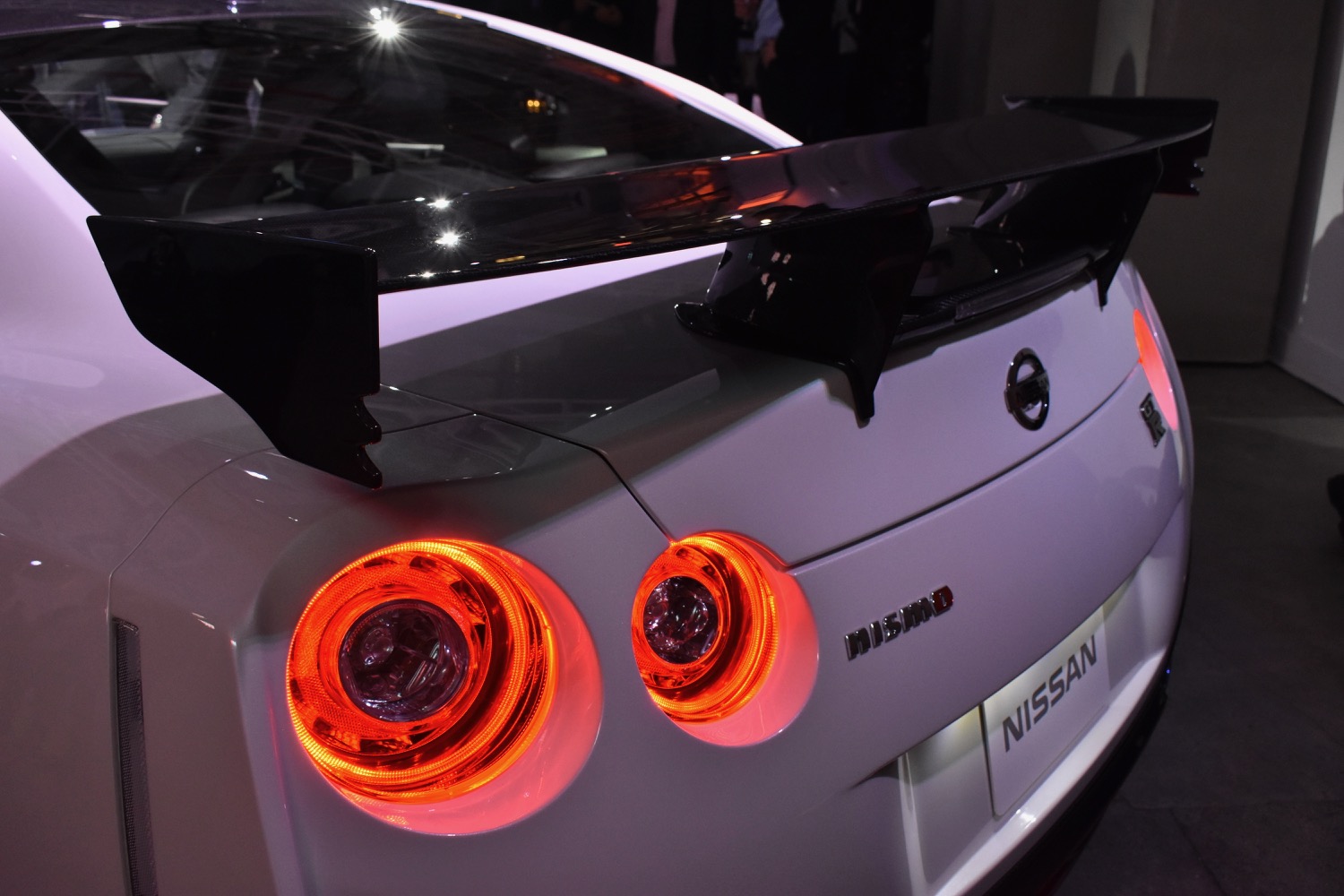At the 2019 New York Auto Show, Nissan rolled out an updated version of the GT-R Nismo, the most hardcore version of its flagship performance car. But the 2020 Nissan GT-R Nismo isn’t dramatically different from last year’s model. Nissan seems content making small changes to the current-generation GT-R (known as the R35), even though the model is about a decade old.
The 2020 GT-R Nismo is all about the details. The massive rear spoiler carries over, but Nissan also added vented front fenders. A feature normally seen on race cars (Nismo is short for “Nissan Motorsport,” after all), they help release heat from the engine bay, as well as air pressure that builds up in the wheel wells. That provides more downforce, which sticks the car to the road surface at high speeds.
Nissan also put the GT-R Nismo on a carbon fiber diet. The front and rear bumpers, side sill covers, hood, roof, and rear spoiler are all made of the lightweight material. The car rides on 20-inch Rays forged aluminum wheels that are lighter than the old wheels, according to Nissan, and come wrapped in wider tires. Thanks to the carbon fiber pieces and other weight-saving measures, Nissan claims the 2020 GT-R Nismo is about 44 pounds lighter than the 2019 model.
The 3.8-liter twin-turbocharged V6 gets new turbos based on units from the GT-R GT3 race car, but power output remains unchanged at 600 horsepower and 481 pound-feet of torque. But Nissan claims the new turbo design improves responsiveness. It’s worth noting that this engine produced just 385 hp when it launched in the original R35-generation GT-R in 2008. As before, the GT-R Nismo uses a six-speed dual-clutch transmission to send power to all four wheels. A titanium exhaust system should give the V6 a livelier growl.
The 2020 Nissan GT-R Nismo goes on sale this summer, with pricing to be announced closer to that date. The 2019 model started at around $175,000, so we expect the 2020 model to be in the same ballpark.
In addition to the Nismo, Nissan unveiled 50th-anniversary editions of both the GT-R and the 370Z in New York. Nissan is using the show to celebrate its performance heritage, but it’s unclear what the future will be. Both the GT-R and 370Z have been on sale for about a decade, making them quite old by industry standards. Nissan claims there is still significant customer demand for both cars, and they remain fairly competitive in their respective segments. Customers may eventually want something new, however.
Updated on April 18, 2019: Added live photos.
Editors' Recommendations
- 2020 Nissan Sentra banishes boring styling, as well as its turbocharged engine
- The 2020 Hyundai Venue is small, affordable, and brimming with value
- Cadillac’s new 2020 CT5 sedan lets you Super Cruise across America
- Could a high-performance Nissan Leaf steal the mighty GT-R’s lunch money?
- This guy designed Nissan’s beastly GT-R. Here’s what he’s doing next


























